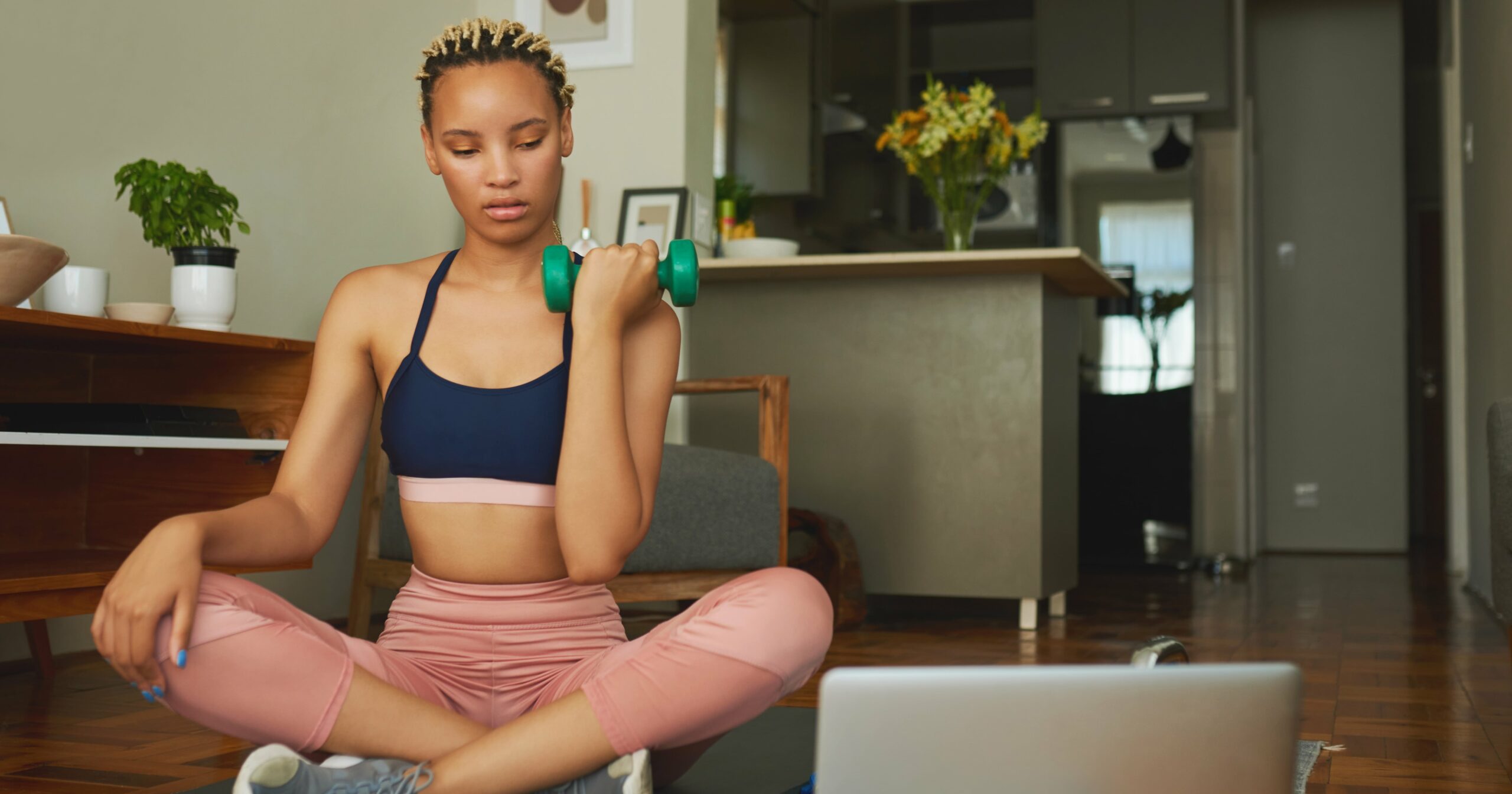When it comes to strength training, injuries can happen – even in the comfort of your own living room. Without the heavy-lifting equipment of a gym or the intensity of a fitness studio, it’s easy to develop a false sense of security. But as with all exercise, strength training at home can still be intense, and it’s important to know how to keep yourself safe.
In order to avoid strength-training injuries at home, you should first understand proper form and safety protocol. To help you ease into safe home training, we spoke to certified coaches about the best tips and tricks to keep in mind. Read on for their advice to avoid injury and build muscle safely – wherever your training takes place.
Experts Featured in This Article:
Matt Kite, BS, CSCS, is a strength and conditioning specialist, general manager at Life Time Fitness, and the previous director of education at D1 Training.
Rachel Straub, PhD, MS, CSCS, is a certified strength and conditioning specialist and the co-author of “Weight Training Without Injury.”
Preventing Injuries From At-Home Workouts
To keep yourself safe while training at home, here are a few things experts recommend:
- Clear Out Space: There’s a reason gyms don’t typically have much on the floor besides workout equipment: clutter can be dangerous. And during home workouts, falling over a coffee table or tripping over your dog’s toy are very real concerns. Save yourself the stress (and potential body aches) by moving furniture and other items out of the way, and making sure you have an empty, safe space before jumping into your workout, says Matt Kite, BS, CSCS. “Make clear boundaries so no little humans or dogs can invade or accidentally walk into your workout,” he adds.
- Be Cautious With Equipment: “When strength training at home, chances are you’re using different equipment than when you are at the gym,” says Rachel Straub, PhD, MS, CSCS. “Whatever you are using, always make sure you’re comfortable with the basic movement before adding any props.” That means you may want to first master doing a bodyweight swing with the proper form before graduating to kettlebell swings, especially if you’ve never done the move or used a kettlebell before. That’s good advice for training anywhere, but especially so at home when you may be alone and without someone who can come to your aid if you need help. “While I love challenging myself and trying new things, it’s probably not the best idea while training alone or at home. Stick to what you know, and go crush it,” Kite agrees.
- Follow a Well-Rounded Routine: One risk with at-home strength training is that it’s easy to get into a bit of a rut, returning to your favorite one or two workout videos or relying on the same one or two pieces of at-home workout equipment you have week after week, whereas the gym offers more variety. But that puts you at risk of overtraining certain muscle groups. “Having a holistic approach to train different areas of the body throughout the week will not only ensure you’re maximizing the benefits of working out, [but] it can also mitigate risk of overtraining and injury,” Kite explains. With that in mind, assign areas of the body for different days and spread out the intensity. For example, you may prioritize upper body strength on Tuesdays, light cardio and mobility on Wednesdays, and lower body strength on Thursdays. Try this four-week workout plan to help you create your own schedule.
- Mix It Up: We love strength training too, but incorporating other types of training, including balance, cardio, and flexibility, can also help you meet your strength goals, Dr. Straub says. “When you have better cardio, you tire less easily. When you have better balance, you can incorporate more advanced strength training exercises (such as single-leg exercises). When you have better flexibility, you can achieve the proper range of motion, which makes strength training more effective,” she explains.
- Consult With a CPT: If you’re struggling to develop a whole-body strength routine or one that incorporates healthy cross-training, you may benefit from more direction or personalized fitness advice. In that case, consider signing up for virtual training with a certified personal trainer (CPT) or coach. “Trainers can help you devise a plan that is fun, simple, effective, and safe,” Kite says. Some trainers will come to your home, or they may offer virtual sessions.
- Listen to Your Body: Online fitness videos can help you switch up your routine and even teach you new exercises, but Dr. Straub urges you to listen to your body when a move doesn’t feel quite right. And if a modification is offered, there’s no shame in taking it. “Just because the instructor on TV or YouTube is doing X sets and Y reps does not mean you have to,” she says. “Yes, getting in shape takes effort, but remember the person on the screen can’t see what you are doing. Use good judgment and listen to your body.”
– Additional reporting by Chandler Plante
Victoria Moorhouse is a beauty content director for Vox Media, where she oversees content for L’Oréal’s Makeup.com and Skincare.com. She was previously a senior editor for PS, where she worked with partners to cover health, fitness, and wellness. She’s also contributed many beauty articles to the site.
Chandler Plante is an assistant editor for PS Health & Fitness. Previously, she worked as an editorial assistant for People magazine and contributed to Ladygunn, Millie, and Bustle Digital Group. In her free time, she overshares on the internet, creating content about chronic illness, beauty, and disability.




